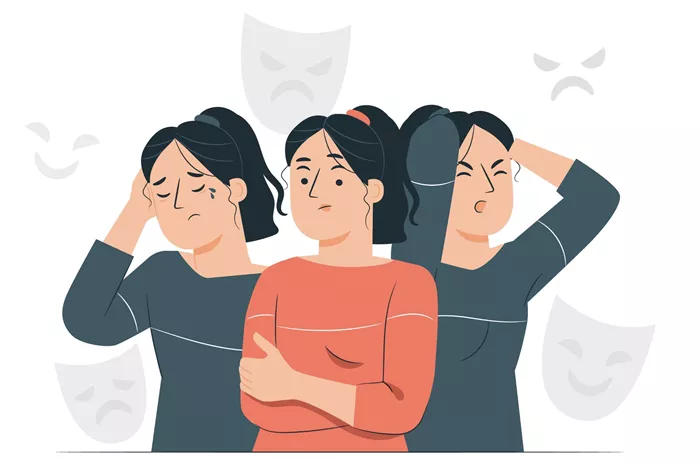Borderline Personality Disorder (BPD) is a mental health condition that can significantly affect a person’s emotions, relationships, and self-image. People with BPD may experience intense mood swings, fear of abandonment, and unstable self-esteem. There are several different types of BPD, and understanding these can help with better diagnosis and treatment. In this article, we will discuss the five primary types of BPD and their unique characteristics.
The 5 Types Of Borderline Personality Disorder
1. The Discouraged Type
The Discouraged Type of BPD is often marked by a deep sense of inadequacy. People with this type may feel unworthy or incapable, which often leads to depression and self-doubt. They may have a pattern of seeking validation and approval from others to feel secure. This type of BPD can make it challenging for individuals to build healthy, trusting relationships.
2. The Impulsive Type
The Impulsive Type of BPD is characterized by a tendency to make hasty decisions without considering the long-term consequences. These individuals often engage in risky behaviors like spending sprees, unsafe sexual activity, or substance abuse. Their impulsivity can stem from a need to cope with emotional pain or to feel alive in a world that seems emotionally overwhelming. These impulsive behaviors can result in serious consequences if not addressed.
3. The Petulant Type
People with Petulant Type BPD tend to be highly sensitive to criticism and rejection. They can be moody and quickly shift from feelings of anger to withdrawal. This type often involves patterns of passive-aggressive behavior and difficulty maintaining stable, harmonious relationships. Individuals with this type may struggle to express their emotions in a healthy manner and may resort to indirect ways of communicating their feelings.
4. The Self-Destructive Type
The Self-Destructive Type of BPD is often marked by self-harm and harmful behavior toward oneself. This can include cutting, burning, or engaging in other forms of physical harm. These individuals might feel like they are in constant emotional pain and may use self-destructive behavior as a way to cope with overwhelming emotions. Understanding this type of BPD is crucial for offering the right support and treatment.
5. The High-Functioning Type
The High-Functioning Type of BPD might not be immediately noticeable because the person appears outwardly successful or in control. They may excel in their professional or personal lives but struggle deeply with internal turmoil, including intense feelings of emptiness or fear of abandonment. Although they may hide their struggles, these individuals often face emotional crises that disrupt their lives when things aren’t going well.
Conclusion
Borderline Personality Disorder is a complex condition that affects individuals in different ways. Understanding the five types of BPD—Discouraged, Impulsive, Petulant, Self-Destructive, and High-Functioning—can help both patients and caregivers manage the disorder more effectively. With the right treatment and support, people with BPD can learn to manage their symptoms and lead fulfilling lives.
5 FAQs About Borderline Personality Disorder
What causes Borderline Personality Disorder?
The exact cause of BPD is unclear, but it is believed to result from a combination of genetic and environmental factors, such as childhood trauma or unstable family dynamics.
Is Borderline Personality Disorder treatable?
Yes, with appropriate treatment, such as psychotherapy (especially Dialectical Behavior Therapy or DBT), medication, and support, many people with BPD can lead healthy, balanced lives.
How can someone with BPD manage their emotions?
Through therapy, self-awareness, and coping techniques, individuals with BPD can learn how to regulate their emotions and reduce impulsive behaviors.
Can medication help with Borderline Personality Disorder?
While there are no medications specifically for BPD, medications like antidepressants, mood stabilizers, or antipsychotics may be prescribed to manage certain symptoms.
Can someone with Borderline Personality Disorder have a normal relationship?
Yes, with the right support and treatment, individuals with BPD can form and maintain stable, healthy relationships. However, it may require extra effort and understanding from both partners.
Related topics:
- The 8 Best Medication For Bpd And Anxiety
- Bipolar VS BPD: What Is The Difference?
- How Is BPD Different From Depression?


